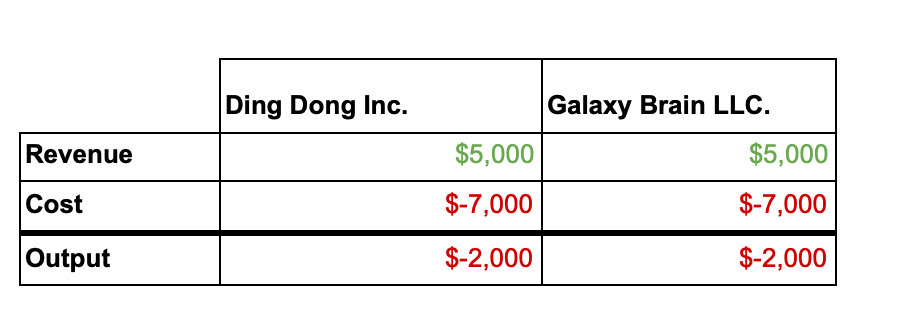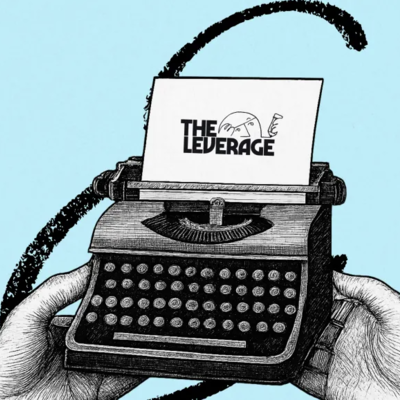
Sponsored By: Thesis
This essay is brought to you by Thesis, the world’s first personalized nootropics . Prescription meds are often seen as the only option, but Thesis is changing the game with its cognitive supplements. Specially formulated blends like Clarity, Energy, Motivation ensure up to 6 hours of flow and focus. Celebrated by Inc. as the 2nd fastest-growing consumer product, Thesis boasts over 10,000 five-star reviews. Ready to meet your potential? Use code EVERY15 for a 15% discount.
Author’s note: This is an updated and expanded analysis per my “Ima fix wolves” policy of rewriting and improving previously published essays. It came to mind because I keep seeing startups make mistakes on how to think about the costs of AI products. Please enjoy this explainer on a much-misunderstood topic.
MoviePass is my favorite business of all time. For a brief, glorious period between 2017 and 2018, the company sold an unlimited movie-watching membership for under $10 a month. All you had to do was pay the fee and then see all the flicks your heart desired. At the time, my favorite theater in Mountain View, California, decked out with reclining leather seats, sold tickets for $15 a pop. Essentially, MoviePass was selling dollars for cents.
Unsurprisingly, people enjoy free things! Their subscriber count jumped from 20,000 to 3 million in a year. All of my friends had it. We would go to the movies at least once a week. We even went if we knew the movie was bad. MoviePass couldn’t be forever, so we felt it was necessary to cash in while we still could. After all, each of us easily cost MoviePass north of $60 a month.
As it turns out, we were right. Giving away money for free is pretty dumb. The company burned through tens of millions of dollars and collapsed by 2019.
MoviePass is my favorite business because I, the consumer, happily took this clueless company’s money and had a blast. It was awesome for me, but it sucked for them.
There is an argument to be made that MoviePass wasn’t a terrible idea. If they had been in the funding environment of 2021, there is a chance they could’ve pulled it off. Get the audience big enough, add advertising on top, plus a pinch of price negotiation with theater companies, and this could’ve been something. But alas, the Fed had yet to turn on the unlimited money spigot, and MoviePass ascended above to the land of dead technology businesses in the sky (this is not the cloud).
Put simply, the cost of the item MoviePass was selling (access to sticky seats) exceeded the price they sold it to me for. No matter how cheap they got their servers, no matter how much they streamlined their marketing and operations, they could never turn a profit until they got their revenue-to-cost-of-goods-sold (COGS) ratio right. Honestly, though, we can’t blame them. They didn’t have this newsletter to teach them.
Today, we are going to dive deep into COGS. While seemingly an easy concept, it has some serious complications. A thorough understanding will help you be a better business practitioner and—if something as absurd as MoviePass ever comes again—be a better value-extracting consumer. Let’s dig in.
COGS in the machine
MoviePass failed, but there are great businesses that lose money for years and are still ultimately successful. Shoot, it took Google three years to get profitable (while simultaneously growing revenue from $220,000 to $69 million [nice]). Ergo, MoviePass just needed more time, and it obviously would’ve been the next Google. This whole argument—which is dumb, by the way—is the reason COGS was invented. To illustrate why, here is a simple example:
Imagine we are looking at the income statement of two businesses, Ding-Dong, Inc. and Galaxy Brain, LLC. You are told they both lost $2,000 in their first year of operation.
“Ah,” you say as you sensually rub your Patagonia vest like it's an investing magic 8 ball, “these both must be the next Google.”
The Only Subscription
You Need to
Stay at the
Edge of AI
The essential toolkit for those shaping the future
"This might be the best value you
can get from an AI subscription."
- Jay S.
Join 100,000+ leaders, builders, and innovators

Email address
Already have an account? Sign in
What is included in a subscription?
Daily insights from AI pioneers + early access to powerful AI tools











Comments
Don't have an account? Sign up!
Thank you for the article. I was confused, though. The article talks about Galaxy being a better business because COGS are low, but then about companies wanting to make theirs COGS higher because that makes them look better, then looking at the COGS/Sales graph per industry, again talking about higher COGS/Sales ratio being better, but later talking about larger margins (therefore lower COGS) being better.
@RODRIGOBRAZ unfortunately the confusion is the point. COGS is not a good or bad thing, it is an optionality thing. the lower your COGS/Sales ratio the more flexibility you will have but lots of great companies have high cogs
Enjoyed the article, thanks! I wasn't sure I was totally understanding the implications of this quote (also was clear you didn't mean it as a hard rule per se, but was curious about the reasoning.)
"But generally, the better the long-term outlook and financial performance of a sector, the more expensive assets in said sector will be."
Why does that tend to be the case? Is it just that it suggests that they are fundamentally dealing with something that people value highly, or is there another aspect?
@leo_8027 asset valuation should be based on the present value of future cash flows. so, if some sector of the economy is going to do better, assets in that sector will be more valuable. For example, software typically enjoys a higher software multiple than media companies because a software companies cash flows are predictable and steady for many years while a media company is in a dying industry with very unpredictable cash flows.